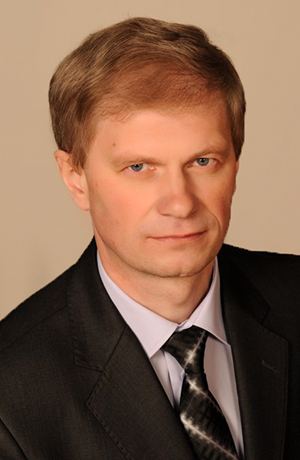|
 UDC 332.142:620.92:338.43; JEL O32
UDC 332.142:620.92:338.43; JEL O32
Yatsiv, I. B., Stupen, M. H., Pylypiv, N. I., & Shelenko, D. I. (2019). Stratehichni oriyentyry rozvytku bioenerhetychnoho potentsialu sil's'kohospodars'kykh pidpryyemstv pid chas perekhodu do tsyrkulyarnoyi ekonomiky [Strategic guidelines for the development of bioenergy potential of agricultural enterprises in the transition to a circular economy]. Rehional'na ekonomika - Regional Economy, 94 (4), 144-151. DOI: https://doi.org/10.36818/1562-0905-2019-4-14. [in Ukrainian].
Sources: 29
Authors
Yatsiv Ihor BohdanovychDoctor of Economics, Associate Professor
Assistant, Vice-Rector for Research and International Relations, Acting Professor of the Department of statistics and analysis of the Lviv National Agrarian University
Contacts:  igyatsiv@ukr.net igyatsiv@ukr.net
Webpages:        

Stupen Mykhaylo HryhorovychDoctor of Economics, Professor
Dean, Head of the Department of land cadastre of the Faculty of land management of the Lviv National Agrarian University
Contacts:  galunagr@ukr.net galunagr@ukr.net
Webpages:        

Pylypiv Nadiya IvanivnaDoctor of Economics, Professor
Head of the Department of theoretical and applied economics of the Faculty of Economics of the Vasyl Stefanyk Precarpathian National University
Contacts:  pylypiv@il.if.ua, pylypiv@il.if.ua,  npylypiv@gmail.com npylypiv@gmail.com
Webpages:    

Shelenko Diana IvanivnaPh.D. of Economics, Associate Professor
Associate Professor of the Department of accounting and audit of the Faculty of Economics of the Vasyl Stefanyk Precarpathian National University
Contacts:  diantsya@ukr.net diantsya@ukr.net
Webpages:         
ResumeGiven the limited volume of natural resources and the trend towards population growth, the existing linear model of take-use-recycling economy needs rethinking. The idea that underlies the circular model of the economy, according to which goods of today are to become resources of tomorrow, is becoming increasingly relevant. Under these conditions, the agricultural sector must, first of all, ensuring food security, intensify the production of biomass as a renewable source of energy, since bioresources and biomass make up the highest share in agriculture. The article summarizes and proposes the strategic goals and guidelines for the development of the bioenergy component of agriculture. In Ukraine, a significant amount of biomass is produced annually, which is not used efficiently. Instead of addressing the needs of the energy sector, the lion’s share of waste is recovered through incineration, which in itself causes significant damage to the environment in general and the economy in particular. It has been researched that the potential of bioenergy largely depends on the geographical distribution and availability of existing waste and by-products on the one hand, and on the overall strategic orientations of the sector’s development on the other. The article analyzes the strategic goals of the rational use of agricultural waste for bioenergy production, which would certainly be economically viable and contribute to the sustainable development of the state’s economy. Strategic guidelines that are formulated in terms of the requirements and constraints of the circular economy are also offered. They are: 1) Use biomass that is obtained only on the basis of the principle of sustainability; 2) Promote the use of research, development and innovation at various stages; 3) Adhere to the principles of optimal use of bioresources; 4) Transformation of business models of players in the bioenergy market. Successful implementation of the circular business model in the agricultural sector must take into account the interests of all market participants, based on the principle of sustainable development. At the stage of transformation from a linear to a circular economy, the agricultural sector needs to change its existing business models in order to increase its innovation component, improve its logistics processes, develop a strategy for realizing its existing bioenergy potential and sustainable economic development in general. It should be understood that the benefits expected from the bioenergy sector are only possible in the long run.
Keywords:bioenergy, sustainable development, circular economy, strategic goals, biorefining
References- Makedon, H. M. (2013). Bioekonomika yak osnova staloho rozvytku Ukrayiny [Bioeconomics as a basis for sustainable development of Ukraine]. Naukovyy visnyk Natsional’noho universytetu bioresursiv i pryrodokorystuvannya Ukrayiny. 181(6). 159-166. [in Ukrainian].
- Kirchherr, J., Reike, D., & Hekkert, M. (2017). Conceptualizing the circular economy: an analysis of 114 definitions. Resour. Conserv. Recycl, 127, 221-232. DOI: https://doi.org/10.2139/ssrn.3037579
- Murray, A., Skene, K., & Haynes, K. (2015). The circular economy: an interdisciplinary exploration of the concept and application in a global context. J. Bus. Ethics, 140 (3), 369-380. DOI: https://doi.org/10.1007/s10551-015-2693-2
- Zvarych, I. (2017). Tsyrkulyarna ekonomika i hlobalizovane upravlinnya vidkhodamy [Circular Economy and Globalized Waste Management]. Zhurnal yevropeys’koyi ekonomiky, 16(1), 41-57. [in Ukrainian].
- Devi, L., Ptasinski, K. J., & Janssen F. J. (2003). A review of the primary measures for tar elimination in biomass gasification processes. Biomass Bioenergy. 24:125-40. DOI: https://doi.org/10.1016/S0961-9534%2802%2900102-2
- Lu, L., Tang, Y., Xie, Jsui, Yuan, Yliang. (2009). The role of marginal agricultural land-based mulberry planting in biomass energy production. Renew Energy. 34:1789-94. DOI: https://doi.org/10.1016/j.renene.2008.12.017
- WBA global bioenergy statistics 2017 (2017). WBA. DOI: https://doi.org/10.1016/0165-232X(80)90063-4
- European Commission, A Sustainable Bioeconomy for Europe: Strengthening the Connection between Economy, society and the environment (2018).
- Camia, A., Robert, N., Jonsson, R., Pilli, R., García-Condado, S., López-Lozano, R., & van der Velde, M., et al. (2018, Feb 21). Biomass production, supply, uses and flows in the European Union. First results from an integrated assessment. Publications Office of the European Union, Luxembourg. DOI: https://doi.org/10.2760/539520
- Bedoić, R., Ćosić, B., & Duić, N. (2019). Technical potential and geographic distribution of agricultural residues, co-products and by-products in the European Union. Sci. Total Environ, 686, 568-579. DOI: https://doi.org/10.1016/j.scitotenv.2019.05.219
- Bentsen, N. S., Nilsson, D., & Larsen, S. (2018). Agricultural residues for energy – a case study on the influence of resource availability, economy and policy on the use of straw for energy in Denmark and Sweden. Biomass Bioenergy, 108, 278-288. DOI: https://doi.org/10.1016/j.biombioe.2017.11.015
- Ooba, M., Fujii, M., & Hayashi, K. (2016). Geospatial distribution of ecosystem services and biomass energy potential in eastern Japan. J. Clean. Prod, 130, 35-44. DOI: https://doi.org/10.1016/j.jclepro.2016.01.065
- Mikulandrić, R., Vermeulen, B., Nicolai, B., & Saeys, W. (2016). Modelling of thermal processes during extrusion based densification of agricultural biomass residues. Appl. Energy. 84. 1316-1331. DOI: https://doi.org/10.1016/j.apenergy.2016.03.067
- Johansson, D. A., & Azar, C. (2007). A scenario based analysis of land competition between food and bioenergy production in the US. Clim Change. 82. 267-291. DOI: https://doi.org/10.1007/s10584-006-9208-1
- Baydala, V. V. (2013). Bioekonomika v Ukrayini: suchasnyy stan ta perspektyvy [Bioeconomics in Ukraine: current state and prospects]. In Zbirnyk naukovykh prats’ Tavriys’koho derzhavnoho ahrotekhnolohichnoho universytetu (ekonomichni nauky) [Proceedings of the Tauride Agrotechnological State University (Economic sciences)]: Vol. 1(3) (pp. 22-28). [in Ukrainian].
- Melnychenko, V. V. (2018). Klasterne modelyuvannya rozvytku bioenerhetychnoho potentsialu sil’s’kohospodars’kykh pidpryyemstv [Cluster modeling of development of bioenergy potential of agricultural enterprises]. Ekonomika ta derzhava – Economy and State, 2, 124-128. [in Ukrainian].
- Zuin, V. G., & Ramin, L. Z. (2018). Green and sustainable separation of natural products from agro-industrial waste: Challenges, potentialities, and perspectives on emerging approaches. Top. Curr. Chem, 376, 3. DOI: https://doi.org/10.1007/s41061-017-0182-z.
- Bruins, M. E., & Sanders, J. P. (2012) Small-scale processing of biomass for biorefinery. Biofuels Bioprod. Biorefin, 6 (2), 135-145. DOI: https://doi.org/10.1002/bbb.1319
- Barakat, A., de Vries, H., & Rouau, X. (2013). Dry fractionation process as an important step in current and future lignocellulose biorefineries: a review. Bioresour. Technol, 134, 362-373. DOI: https://doi.org/10.1016/j.biortech.2013.01.169
- Khoo, H.H., Eufrasio-Espinosa, R.M., Koh, L.S.C., Sharratt, P.N., Isoni, V. (2019). Sustainability assessment of biorefinery production chains: A combined LCA-supply chain approach. J. Clean. Prod. 235, 1116-1137. DOI: https://doi.org/10.1016/j.jclepro.2019.07.007
- Walsh, P., & Higson, A. (2012, Jan). Bio-based Chemicals: Value Added Products from Biorefineries. IEA – Bioenergy. Task 42. URL: https://www.researchgate.net/publication/262048753_Bio-Based_Chemicals_Value_Added_Products_From_Biorefineries
- Ghisellini, P., Cialani, C., Ulgiati, S. (2016). A review on circular economy: the expected transition to a balanced interplay of environmental and economic systems. J. Clean. Prod. 114, 11–32. DOI: https://doi.org/10.1016/j.jclepro.2015.09.007
- Sanyé-Mengual, E., Secchi, M., Corrado, S., Beylot, A., & Sala, S. (2019). Assessing the decoupling of economic growth from environmental impacts in the European Union: A consumption-based approach. J. Clean. Prod. 236. DOI: https://doi.org/10.1016/j.jclepro.2019.07.010
- Breure, A. M., Lijzen, J. P. A., & Maring, L. (2018). Soil and land management in a circular economy. Sci. Total Environ, 624, 1125-1130. DOI: https://doi.org/10.1016/j.scitotenv.2017.12.137
- Baydala, V. (2016). Vplyv bioekonomiky na prodovol’chu bezpeku Ukrayiny [Impact of bioeconomy on Ukraine’s food security]. Agricultural and Resource Economics, 2(3), 48-59. [in Ukrainian].
- Hallström, E, Carlsson-Kanyama, A, & Börjesson, P. (2015). Environmental impact of dietary change: a systematic review. J Clean Prod, 91, 1-11. DOI: https://doi.org/10.1016/j.jclepro.2014.12.008
- Mengal, P., Wubbolts, M., Zika, E., Ruiz, A., Brigitta, D., Pieniadz, A., & Black, S. (2018). Biobased Industries Joint Undertaking: The catalyst for sustainable bio-based economic growth in Europe. N. Biotechnol, 40, 31-39. DOI: https://doi.org/10.1016/j.nbt.2017.06.002
- Lange, L., Bech, L., Busk, P. K., Grell, M. N., Huang, Y., Lange, M., Tong, X. (2012). The importance of fungi and of mycology for a global development of the bioeconomy. Imafungus, 3(1), 87-92. DOI: https://doi.org/10.5598/imafungus.2012.03.01.09
- Yakubiv, V., & Boryshkevych, I. (2018). Strategic analysis of the development of renewable energetics in the world and in Ukraine. Journal of Vasyl Stefanyk Precarpathian National University, 1 (1), 18-25.
|